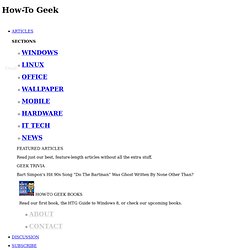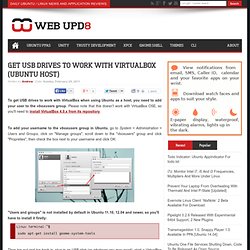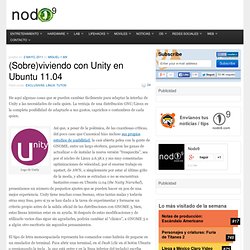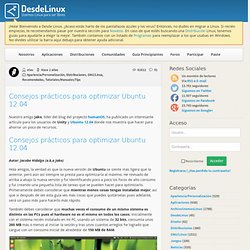

7 Tips to Get the Most Out of BleachBit, a “CCleaner for Linux” Like CCleaner on Windows, BleachBit frees space by deleting unimportant files and helps maintain your privacy by deleting sensitive data.

And, just like CCleaner, there’s more you can do with BleachBit than just clicking a single button. BleachBit is available in Ubuntu’s Software Center and most other Linux distributions’ software repositories. You can also download it from the BleachBit website – it even runs on Windows, too. Basic Cleaning Select the type of data you want to remove in BleachBit’s sidebar after launching it. BleachBit warns you if you select an option that’s slow or may have other problems. You should run a preview by clicking the Preview button before running an actual Clean operation.
File Shredding Instead of deleting files normally, you can go into BleachBit’s preferences window (Edit –> Preferences) and enable the Overwrite files to hide contents option. Wiping Free Disk Space. Noobs on Ubuntu and Windows, HD Wallpapers, Tutorials. Get Your USB Drives To Work With VirtualBox (Ubuntu Host) To get USB drives to work with VirtualBox when using Ubuntu as a host, you need to add your user to the vboxusers group.

Please note that this doesn't work with VirtualBox OSE, so you'll need to install VirtualBox 4.0.x from its repository. To add your username to the vboxusers group in Ubuntu, go to System > Administration > Users and Groups, click on "Manage groups", scroll down to the "vboxusers" group and click "Propreties", then check the box next to your username and click OK: "Users and groups" is not installed by default in Ubuntu 11.10, 12.04 and newer, so you'll have to install it firstly: sudo apt-get install gnome-system-tools Then log out and log back in, plug in an USB stick (or whatever you may need), start a VirtualBox machine and select the USB device in the lower right. If you want to set up USB for VirtualBox manually, you can run the following command: sudo gedit /etc/group.
Unity ubuntu - (Sobre)viviendo con Unity en Ubuntu 11.04. He aquí algunas cosas que se pueden cambiar fácilmente para adaptar la interfaz de Unity a las necesidades de cada quien.

La ventaja de una distribución GNU/Linux es la completa posibilidad de adaptarlo a sus gustos, caprichos o costumbres de cada quien. Logo de Unity Así que, a pesar de la polémica, de las cuantiosas críticas, del poco caso que Canonical hizo incluso sus propios estudios de usabilidad, la casi abierta pelea con la gente de GNOME, entre un largo etcétera, ganaron las ganas de actualizar o de instalar la nueva versión “fresquecita”, sea por el núcleo de Linux 2.6.38.x y sus muy comentadas optimizaciones de velocidad, por el enorme trabajo en upstart, de AWN, o simplemente por estar al último grito de la moda, y ahora se extrañan o no se encuentran bastantes cosas en Ubuntu 11.04 (the Natty Narwhal), presentamos un número de pequeños ajustes que se pueden hacer en pos de una mejor experiencia.
¿El Dash despliega archivos privados o su amada pornografía? Unity –reset-icons. Consejos prácticos para optimizar Ubuntu 12.04. Consejos prácticos para optimizar Ubuntu 12.04.

8 Ways to Tweak and Configure Sudo on Ubuntu. Like most things on Linux, the sudo command is very configurable.

You can have sudo run specific commands without asking for a password, restrict specific users to only approved commands, log commands run with sudo, and more. The sudo command’s behavior is controlled by the /etc/sudoers file on your system. This command must be edited with the visudo command, which performs syntax-checking to ensure you don’t accidentally break the file. Specify Users With Sudo Permissions The user account you create while installing Ubuntu is marked as an Administrator account, which means it can use sudo. You can control user account types graphically from Ubuntu’s User Accounts tool.
Make Sudo Forget Your Password By default, sudo remembers your password for 15 minutes after you type it. Sudo –k Always Ask For a Password. [Video]: Creando tu primera aplicación para Ubuntu. Writing udev rules. By Daniel Drake (dsd) Version 0.74 The most recent version of this document can always be found at: Contents Introduction About this document udev is targeted at Linux kernels 2.6 and beyond to provide a userspace solution for a dynamic /dev directory, with persistent device naming.

Over the years, the things that you might use udev rules for has changed, as well as the flexibility of rules themselves. This document assumes that you have udev installed and running OK with default configurations. This document does not cover every single detail of rule writing, but does aim to introduce all of the main concepts. This document uses various examples (many of which are entirely fictional) to illustrate ideas and concepts. History The concepts Terminology: devfs, sysfs, nodes, etc. A basic introduction only, might not be totally accurate. On typical Linux-based systems, the /dev directory is used to store file-like device nodes which refer to certain devices in the system. Why? # ls -lR /dev/disk.